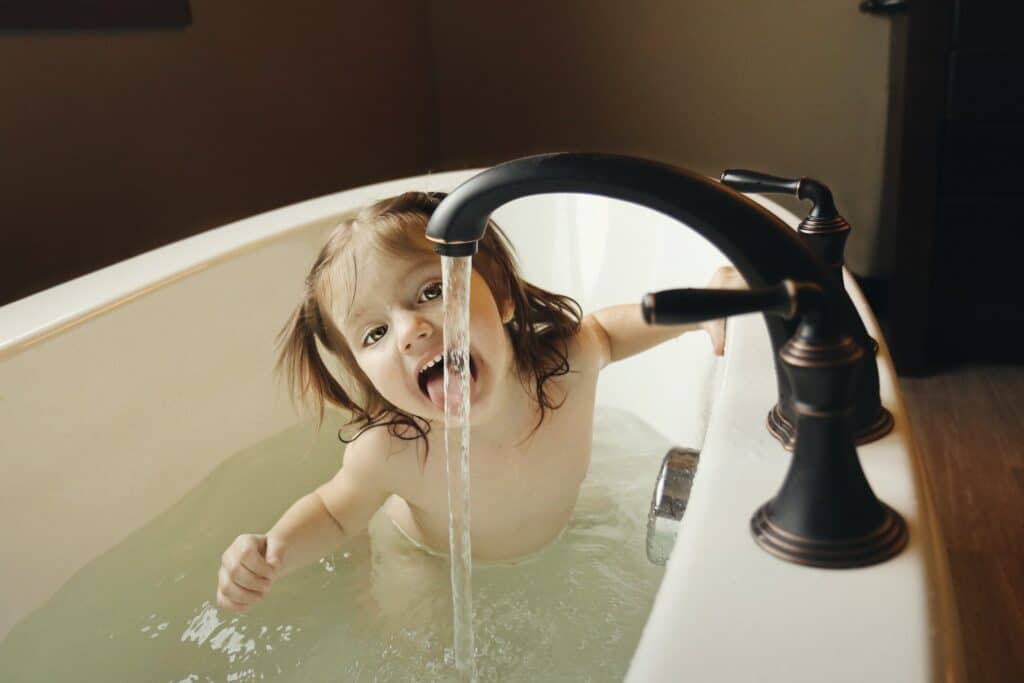The Many Benefits of Playing in the Snow

As the season of winter is vastly approaching, snow is (potentially) in the air! While we may want to stay indoors when it is snowing, playing in the snow actually has many benefits to a child’s development (once bundled up, of course!). Playing, moving around, building and creating in the snow provides opportunities for gross and fine motor skill development, coordination, body awareness, problem-solving, and even social skills. Not to mention an overall great activity to provide sensory input.
Cold Weather Clothing

The leaves have begun to fall and it’s time to dig out the long sleeves, pants and jackets. For a kid who struggles with sensory processing, especially tactile defensiveness, this time of year may cause increased stress and anxiety. For a child on the Autism spectrum or with other tactile difficulties, tags, textures and seams may cause complete meltdown. Luckily many clothing brands have recognized this difficulty and have attempted to ease the transition between seasons.
Tips and Tricks to Avoid the After School Meltdown

School is back and session! During school kids are expected to sit for a majority of the day and this can be challenging for most, especially for those with sensory processing difficulties. Here are some tips and tricks to help avoid that after school meltdown while also getting homework done.
Bathtime Tips

For some parents bathtime can be a fun and/or relaxing experience. For others, bathtime can be quite challenging. It often causes a negative reaction in children with sensory processing difficulties. Some things that might trigger a negative reaction in kids include: the sound of running water, water temperature, bathroom lights, the smell of soap or shampoos, fear of getting soap in the eyes, the feeling of being wet after washing, and the feeling of being towel dried. The best way to make bath time more enjoyable is to limit fears and incorporate some of your child’s favorite activities and toys.
Oral Motor Activities for Proprioceptive Input

Does your child like crunchy foods? Do they like to chew gum? Do they move their mouths
when they are overstimulated or stressed? If you see these behaviors, your child may be seeking
proprioceptive input to calm and organize their body through their oral system. Along with fun
activities like crashing into mats, jumping on a trampoline, wall pushups, and animal walks, you
can help your child receive the same proprioceptive input through oral motor activities.
Tips n’ Tricks to Prevent Holiday Meltdowns

The holidays are a magical time of year for children and their families. Sometimes all the fun and excitement can increase sensory overloads resulting in meltdowns. Here are some tips to help your family successfully navigate the holiday season!
Say Yes to the Mess

A child’s job is to play and, guess what? They LEARN through play. Learning through play does not only mean playing with toys. It means allowing your child to play with food, too. Why is this important? It is important because eating is one of the most complex activities we do as humans. It involves ALL of our senses-sight, smell, touch, sound, and taste and even our “hidden sense” of proprioception as we grade how much force to use when grasping food. There are 2 other “hidden senses” in addition to proprioception (vestibular, interoceptive) that are also involved, but we can save talking about those in more detail for another day. By allowing your child opportunities to play with and explore a variety of foods, the more you are EXPOSING them to the sensory aspects of the food. Over time, EXPOSURE leads to ACCEPTANCE.
Sensory Processing Disorder (SPD)

Sensory Processing Disorder (SPD) is a condition that affects how your brain processes sensory stimuli. Children with SPD will either overreact or under-react to sensory stimuli. There are 3 major patterns of SPD including Sensory Modulation Disorder (SMD), Sensory-Based Motor Disorder (SBMD), and Sensory Discrimination Disorder (SDD).
Living a “Sensory Rich” Lifestyle

What are some of the things that you do daily, in order to keep yourself engaged and focused during the day? Do you need to have a mid-day snack, coffee, or walk? Do you journal everyday or participate in yoga or breathwork? What about participating in a weight lifting or cycling routine? Are you a baker or cook? The above mentioned activities are actually all common methods that people use to self-regulate!
SNOW DAYS

There are many benefits to playing in the snow and so many ways to incorporate therapeutic activities into a snow day at home.
